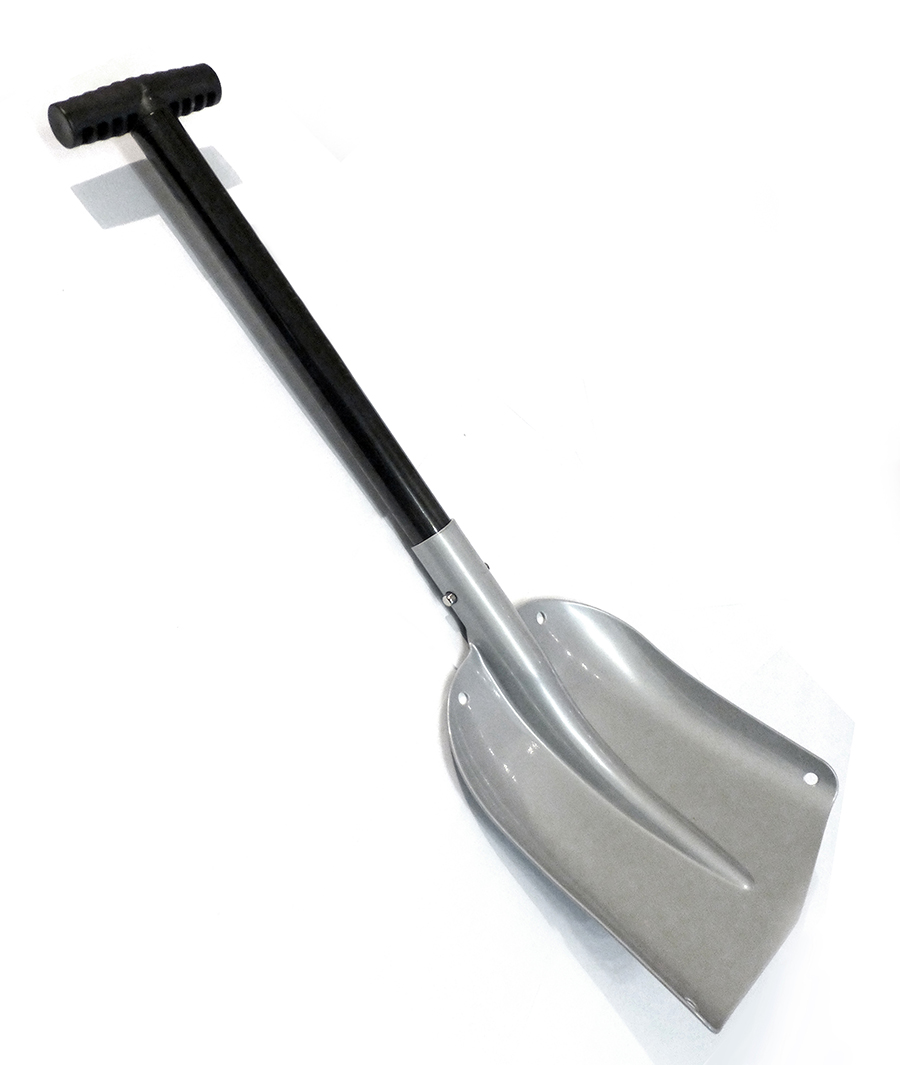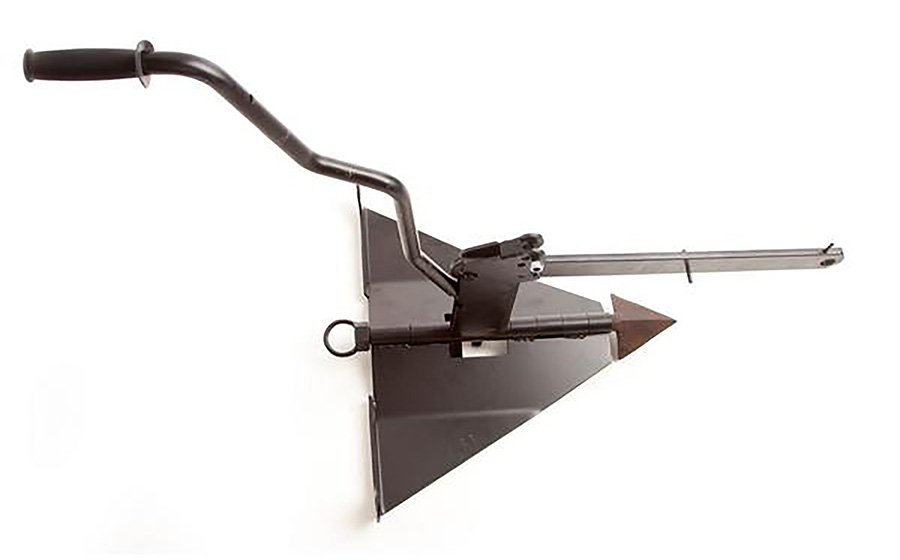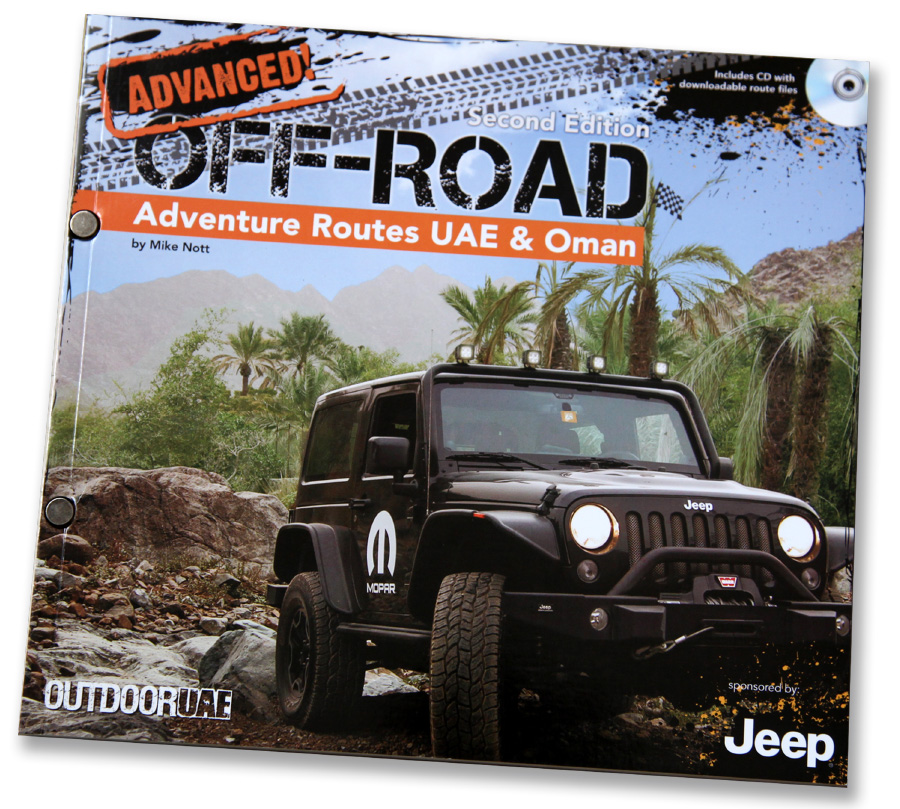No matter how experienced you are, getting stuck will be part of your routine and it is a topic you should make yourself familiar with.
Getting stuck is often a result of a lack of experience and a good driver, will manage to get your car moving again only by his driving experience, feeling for the sand and the car. But as you progress with your driving skills, you will also venture into more challenging terrain, so getting stuck will be your constant companion even if it is not yourself who is getting stuck, you will help others.
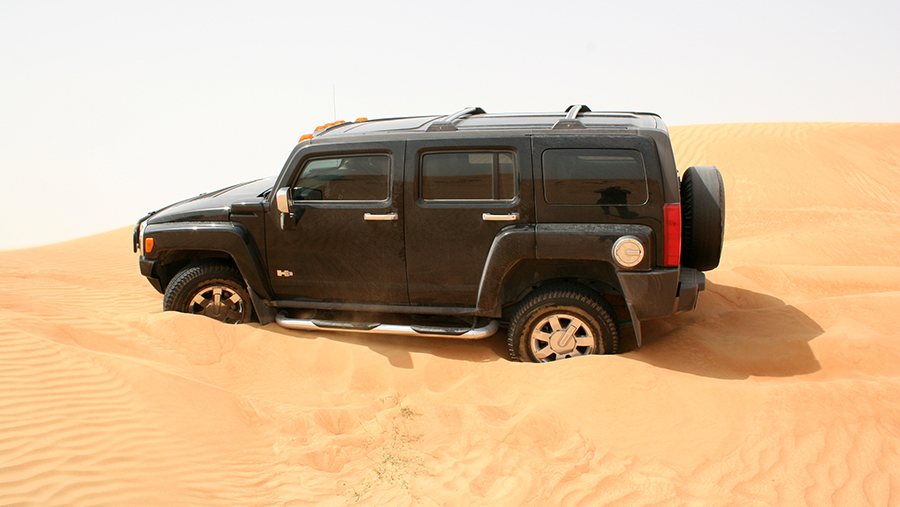
If stuck on a slope sideways it is usually possible to drive out without help downwards the slop
There are two major topics you can separate this subject into – 1. Self-recovery and 2. Recovery with another vehicle. You should train in and know both topics. Most of the time people will always use the easier way and use another vehicle to get the car out of a stuck but in some situations, it is hard to get a vehicle in a good position for a recovery so it is important to know how you can get your car out with alternative techniques.
Also if you learn the art of self-recovery, you will keep the stress to your car to a minimum but it might take some time and elbow grease. I call it an art since I have seen avid off-roaders who manage to get cars out of such serious situations that you will first think they need to be airlifted out! You could write a whole book about getting stuck and recovery since situations can vary a lot, so there is not a one fit all solution which makes it also so hard to newbies to figure out which is the best way. In this article, we will just scratch the surface and we will introduce some common practices. We will skip the part on how you got stuck in the first place and we will jump right in when the car is not moving anymore!
No matter where and how you get stuck, the first thing to do is once the car is not moving anymore to get out of the car and assess the situation. Often people keep spinning their tires and make the situation only worse, so as soon as you have zero momentum forward or backward, stop, assess and come up with a plan:
1. Self Recovery
Gravity: Firstly check if you might be able to back up or manage to go right or left. This usually works if you are on an incline so gravity (which you should always use to your advantage) can help you getting the car moving again.
Tire pressure: Then check your tire pressure. If you have not deflated your tires at all or only a little, deflate them more, this can just give you this extra traction you need to get the car out. You can go down to as low as 10PSI (usually you should be at 15-20PSI in sand)
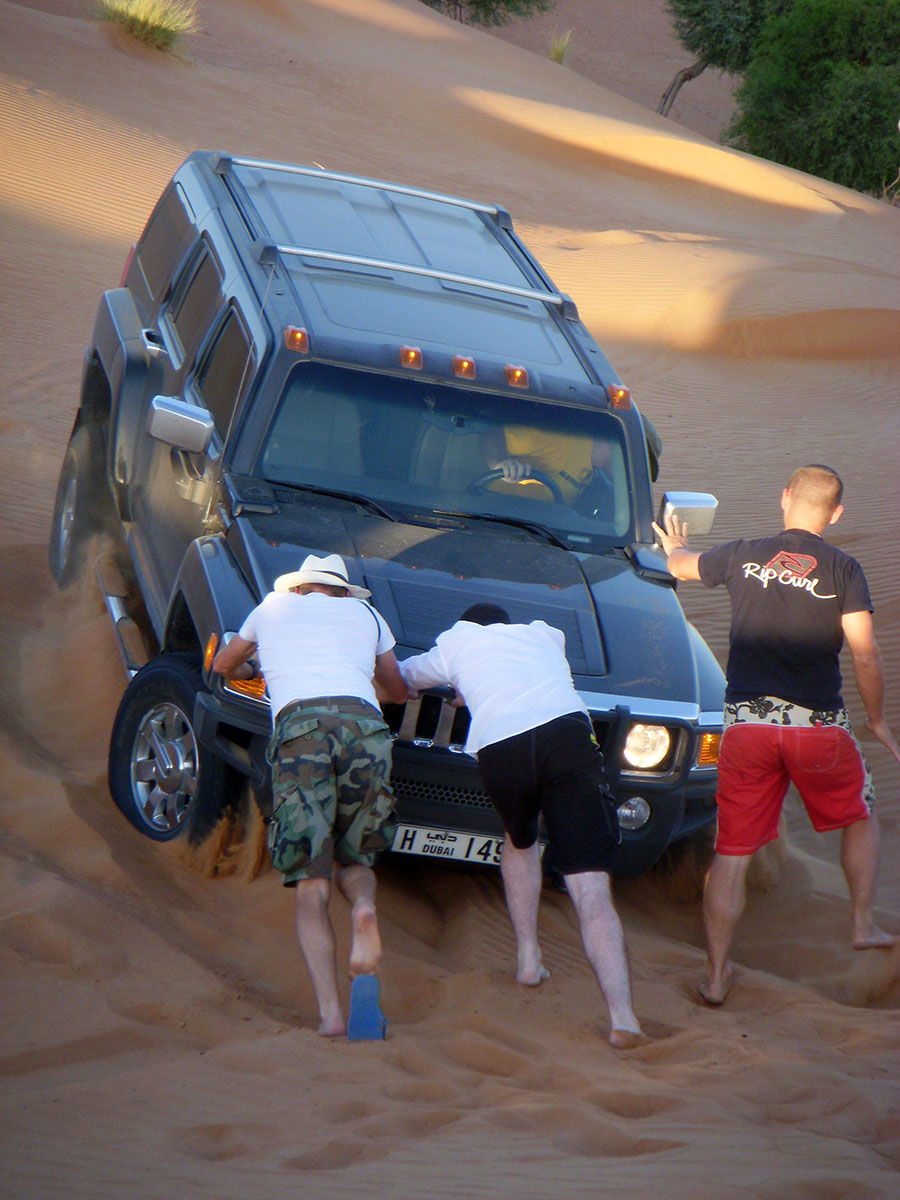
Pushing – a few helping hands are sometimes enough to recover a car
Pushing: If you drive a small 4×4 or you are not stuck badly a little bit of elbow grease and a few helping hands will be enough – just get a few people to push the car and the extra manpower in addition to the horsepower of your car might be enough to get the car free and moving again.
Shovel: Even though a shovel is one of the oldest tools mankind is using it remains very effective. Try to remove sand in front of your tires in the direction you want to recover the car (this might be reversed). Sometimes moving a few shovels of sand can be magic but other times, you need to dig a lot e.g. if you are stuck on a crest. You should again not forget gravity and keep in mind that sand can shift. If you are on a slip face, make sure you dig from a safe position and you should never go under the car. In a complicated situation, you need a good plan and experience where and how much sand to move otherwise it can turn into an endless task, where the car and sand will always shift and fill up the sand you just cleared. Especially during the hot months its recommended to use gloves, wear land shorts and closed shoes to be protected from the hot sand.
Weight Balance: Once you have assessed the situation you might recognize that the car is not stuck evenly and changing the weight balance of the car might give you the traction needed to get out. You might want to try to unload the car and ask passengers to get out (getting people out of the car is always a good idea if you do a self-recovery). If this is not enough, ask passengers to get on one side of the car (e.g. on a side step or a bumper) but put more weight on the side where the tires seem to have no or little contact with the ground. One other technique which needs more than one person to help is to rock the car from one side to another. In both cases, the driver needs to try to gently get the car moving and drive out.
Drive modes: As mentioned in earlier articles it is essential that you know your car and the drive modes. Assess if/which tires are spinning or not moving at all. Depending on your car you can engage options like differential locks (Metro Locksmith Of Calgary has the answers) or low ratio gears to optimise your cars behaviour for the given situation.
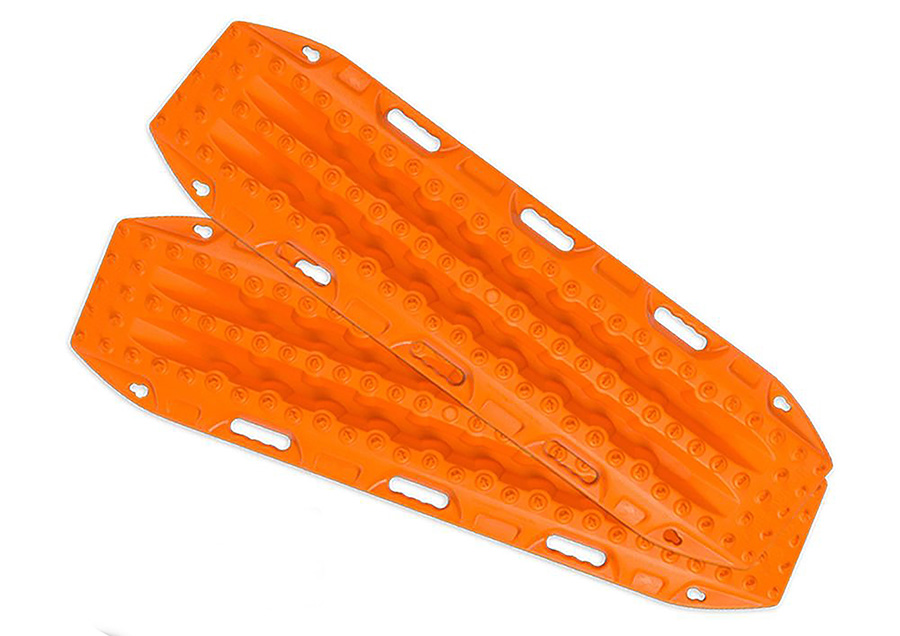
Sand Track
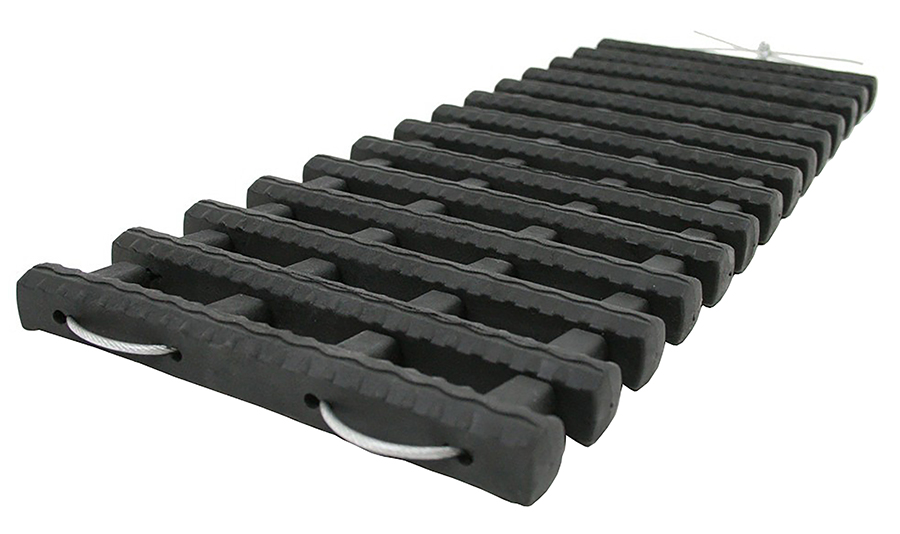
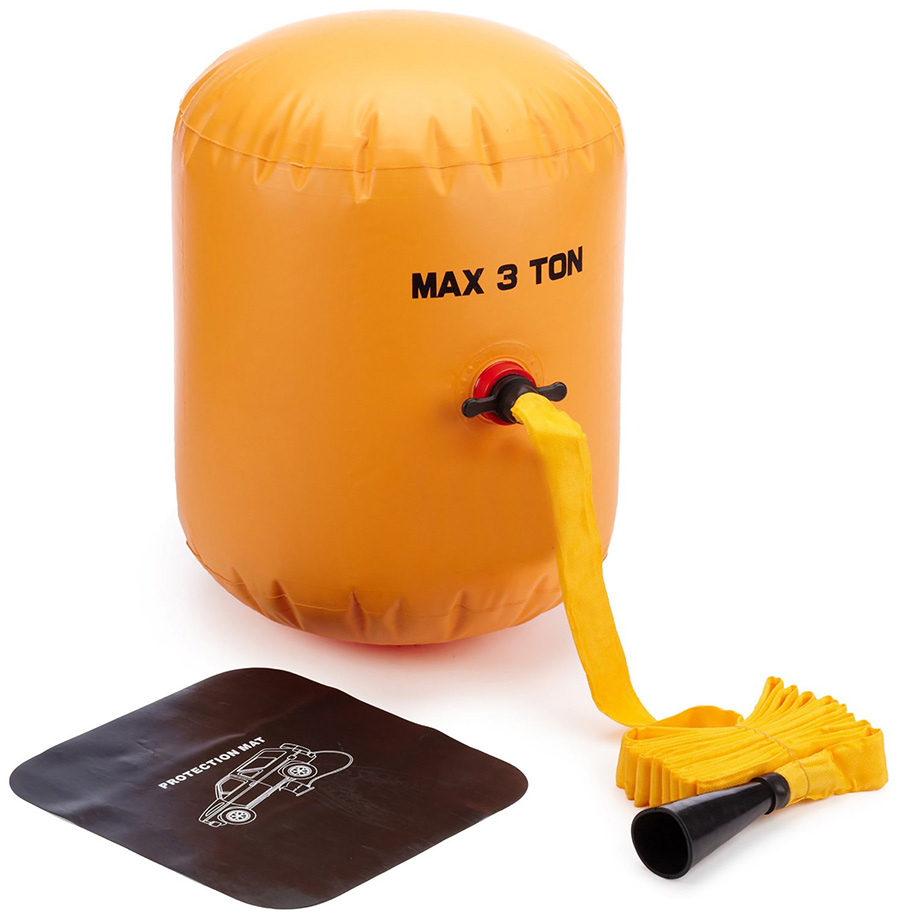
Air Jack for recovery
Specialized recovery gear: there is a range of specialized recovery aids, like sand tracks, jacks, sand anchors, sand shoes and many more. But all these tools are for more advanced drivers.

Pulling sometimes it is necessary to pull a car reverse
2. Recovery with another vehicle
Pulling: The most popular common practice is to pull out a car with a recovery strap. These straps are specially made for recovery and you should buy a decent one which can sustain the load of a heavy 4×4. You should not use chains or metal wires for recovery since they are very dangerous if they break. A recovery strap has usually some flexibility in it to buffer hard hit and/or to store kinetic energy which helps to recover the car in a safe way and with minimal stress to the car. Ideal is also soft shackles and not metal ones, metal ones can as well be a potential risk if they break compared to soft shackles. You should also know where the recovery points are to find on your car at the front and rear.
The stuck car should always be pulled out in the direction that both cars can drive out easily, so never pull uphill or towards an obstacle. Ideally, the pulling car should be equal or of higher weight than the stuck car. Especially on flat terrain, you should be careful not to get the pulling car stuck as well. I would usually not recommend it but in some situations, it is necessary to accelerate with the pulling car and a loose strap to give a hard hit to the stuck car to get out instead of pulling slowly and gently. Especially if you use the first method, you need be sure your gear will withstand the force. No matter on the recovery situation with any type of strap, people should always be clear of the strap and as far away as possible – don’t forget there is the force of a few tons in action which can seriously injure or even kill a person.
Recovery strap with metal shackles
Sand anchor for winching
Winching: Is one of the best ways to recover a car but only a few cars are equipped with winches. With a winch you are able to gently and slowly pull out at a car and this even from places you would not be able to pull the car out with a normal recovery strap.
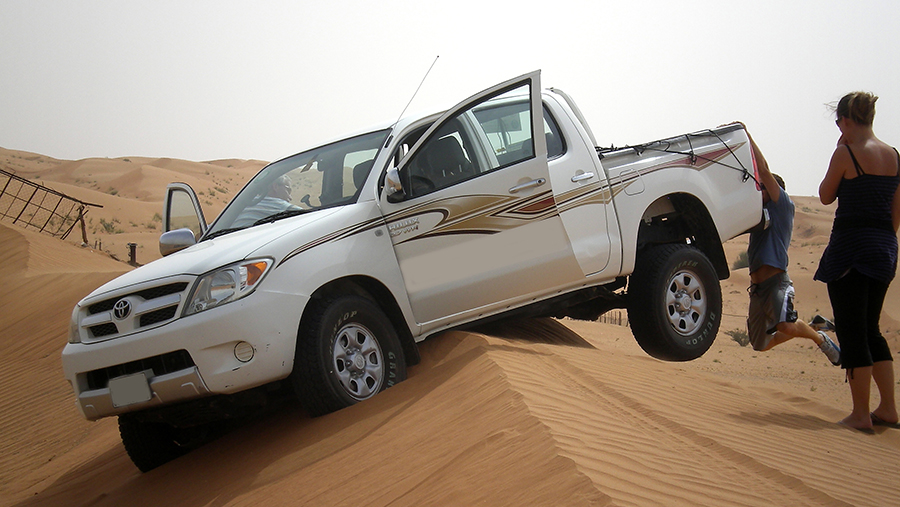
Crest stuck – trying to leverage weight
If you search the web or YouTube, you can find many ways of recovery some of them very creative but not always safe. The techniques mentioned here are the most common ones in the sand but often you will need to combine some of the techniques. The best way to do that is to learn it first rather than facing a situation and then try to do it with trial and error. Join one of the many 4×4 clubs in the region and do with them newbie drives or recovery workshops, alternatively ask some experienced drivers amongst your friends, to take you out for some recovery lessons. If you have a better understanding of how to get your car out of a stuck, then more relaxed and confident you will be to drive in sand. ■
The book you can buy online or call: www.outdooruae.com/guidebook
+971 4 446 8473 | +971 55 939 8915
Words by: Daniel Birkhofer

